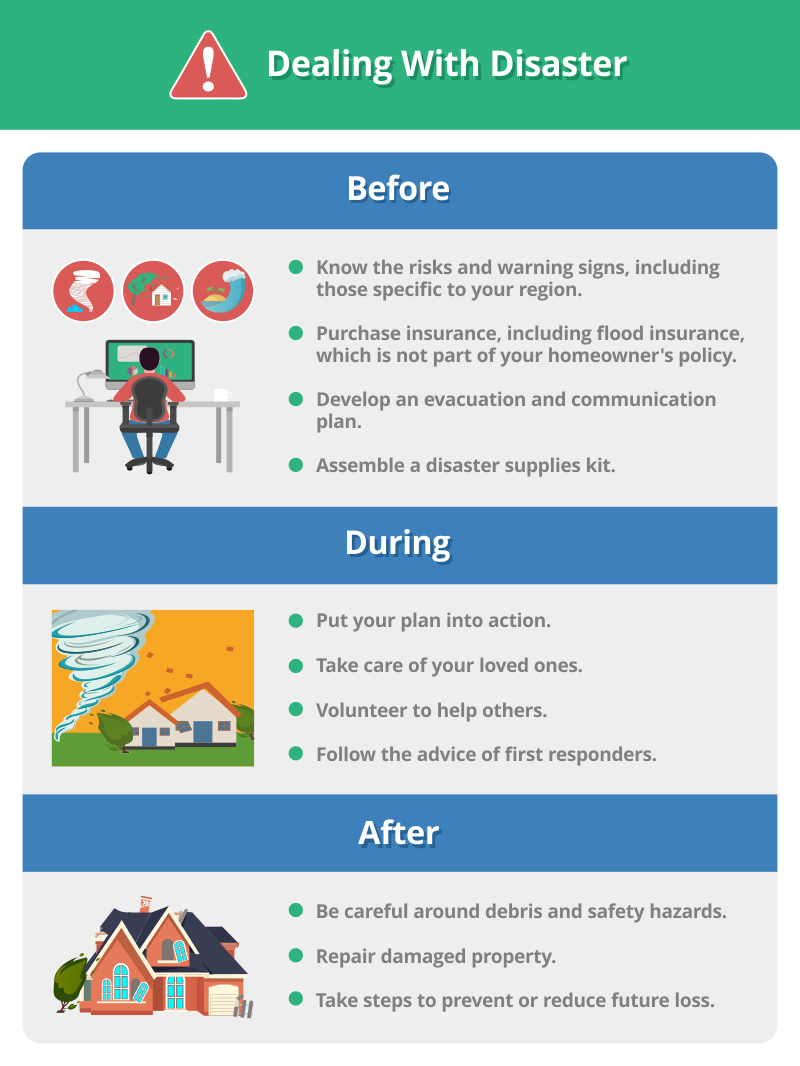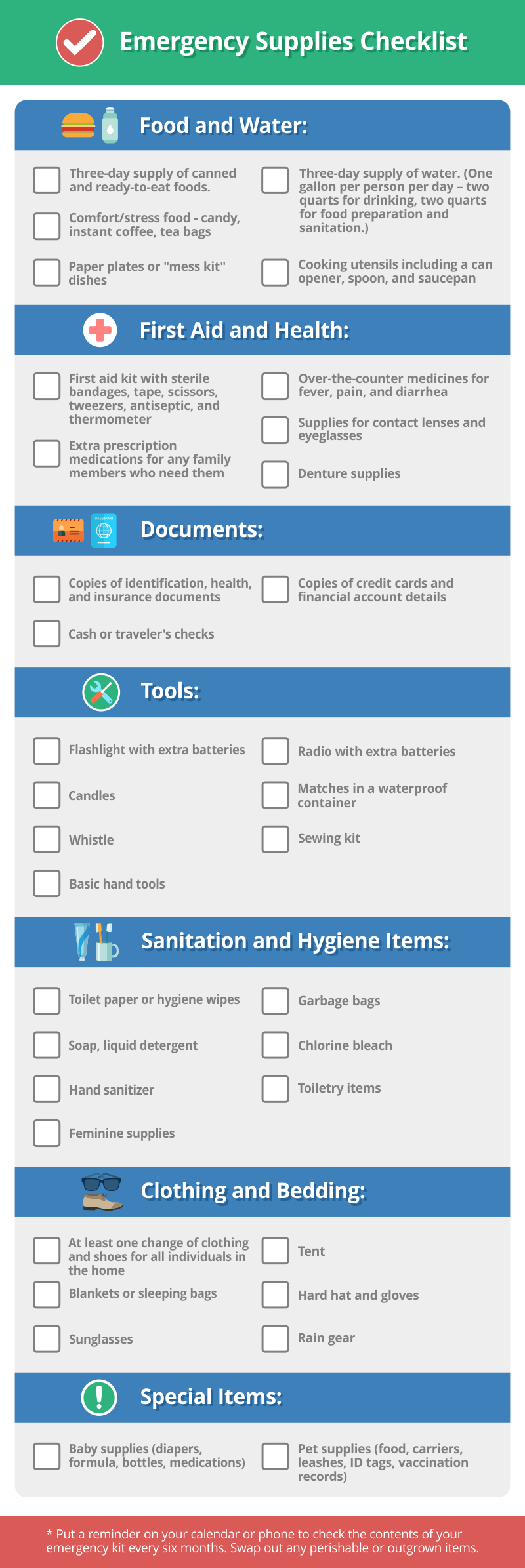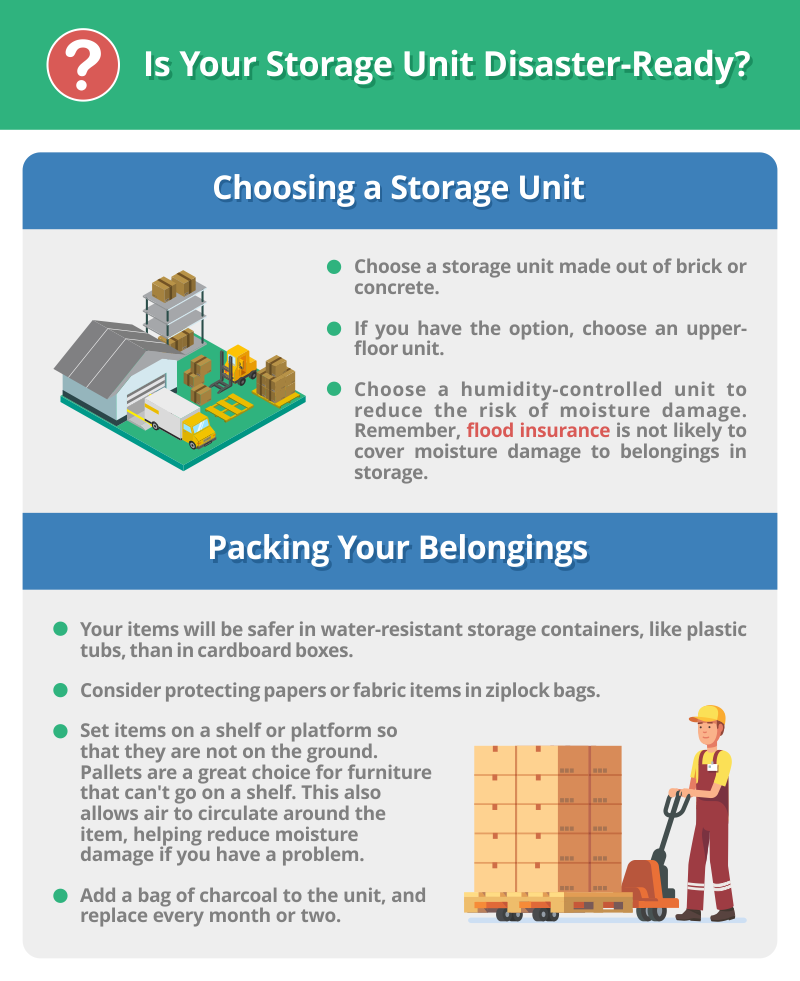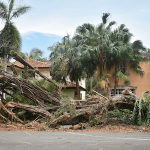A disaster can happen anywhere – with little or no warning. If a storm or a wildfire were headed your way, would you know how to secure your property? If you had to evacuate on short notice, could you grab essential items for your family quickly? Although it’s impossible to completely disaster-proof your home, there are steps you can take to keep your loved ones and your belongings a bit safer. Every moment matters when a disaster is looming and being prepared can make a huge difference. This guide will help you plan ahead.

General Disaster Preparedness
Knowing which threats are most common in your area is important, but some preparedness tips apply to any disaster you might face, whether it’s fire, flood, hurricane, earthquake, or something else.
How will you get news and information? When foreseeable disasters like hurricanes are churning off American shores, there’s no shortage of news about it. But what about disasters like tornadoes or a terrorist attack, which might only come with a few minutes warning? If you watch network television or listen to live radio, you will probably hear Emergency Alert System (EAS) messages. But if you’ve “cut the cord” and don’t get broadcast signals or don’t tune in often, you might want to make a plan.
- Ask how local authorities in your community send urgent warnings. Are there sirens that you will be able to hear?
- Make sure your cell phone is set up for emergency text alerts.
- Consider purchasing a NOAA National Weather Service radio receiver.
Do you know where the nearest hospitals and evacuation routes are? Evacuations are more common than many people realize. Every year, fires, floods, and chemical spills force tens of thousands of Americans to leave their homes. If you’ve lived in your community for any length of time, chances are you know your way around. But you may not know where your evacuation routes and emergency shelters are.
- Learn the escape routes from your home.
- Make note of the hospitals in your community.
- Familiarize yourself with your specific evacuation route. (Don’t try to take shortcuts in an evacuation emergency. They may be blocked.)
- Try to keep your car’s gas tank at least half full at all times. You might not be able to fill up if something happens suddenly.
Where would you stay if you had to evacuate your home? Staying in an emergency shelter should be a last resort. They are often strained to capacity and many do not accept pets. If you have other options, it is usually best to use them.
- Identify several places you could go in a crisis, such as a motel or a family member’s home in another town. Choose destinations in different directions so you have options during an emergency.
- If needed, identify a place that will accept pets.
- During a disaster, the Red Cross keeps a list of open emergency shelters.
- You can also search for open shelters by texting the word SHELTER and your 5-digit Zip Code to 43362 (4FEMA).
- If you have children, talk to them about who could pick them up in an emergency.
- Designate safe meeting places where your family should go in an emergency – in your home (ex. basement or interior room), in your neighborhood (ex. by a tree or mailbox), outside of your neighborhood (ex. church or friend’s home), and outside of your town.
- Choose someone who lives outside of your area to be your family’s designated contact person. This will be the person your family members should contact if they are separated from you. (Make sure all family members know the contact’s phone number by memory or have it written on a small emergency contact card that they carry with them.
Do you know how to shut off your utilities? Natural gas leaks and electrical sparks cause a significant number of fires following disasters. Water leaks can cause flooding and waste clean water when supplies are scarce. Every member of your family should know where the shutoff valves are for your natural gas and water lines, and should know how to flip the switches on your electric circuit box to cut electricity to the whole house.

Disaster Risks by Region
Regions of the U.S. have different disaster risk factors, but no region is immune to the possibility of a catastrophic event. According to the National Oceanic and Atmospheric Administration (NOAA), 2017 was the costliest year ever recorded for natural disasters, with 16 events whose costs topped $1 billion. These disasters included hurricanes, wildfires, hail storms, tornadoes, and flooding.
These are the most common threats in different parts of the United States.

 Hurricane and Flood Preparedness
Hurricane and Flood Preparedness
Hurricanes can be terrifying, deadly, and catastrophically destructive. But compared with other natural disasters, they are probably the easiest to prepare for because typically you have several days of advanced warning before they make landfall. The same is sometimes true for flooding, except in the case of flash flooding.
The biggest danger in a hurricane is a storm surge, which is a rise of water generated by the wind from the storm. Storm tide, a similar problem, occurs when the water level rises during a storm due to the tide and the storm surge. Both can cause tremendous flooding. Wind is another danger, but the water is where the biggest problems lie because it creates catastrophe long after the wind has passed.
Here are some pointers to help protect yourself from disaster during a hurricane:
Remove all items from our yard that could blow around during the storm. Rent a storage unit to keep things like patio furniture and outdoor toys safe.
- Cover windows and doors from the outside using plywood or storm shutters.
- Know how to turn off power, and do so if flooding or downed power lines are a problem. If you have to evacuate, turn off the power to be proactive.
- Fill several containers with clean drinking water. Fill the sink and bathtub with water to be used for washing. This will protect you if the power goes out or you lose water supply during the storm. Plan for at least three days’ worth of water.
- Set the freezer and fridge to the lowest possible temperature so your food will stay protected as long as possible if the power goes out.
- Fill your car’s gas tank so you can move out of the storm’s path in an evacuation.
- Bring vehicles into the garage or under some cover during the storm.
Flooding is a common problem after a hurricane, but it can happen in other situations as well. Here are some preparedness tips for floods:
- Store items in waterproof containers
- Build a platform to get your stored items off the ground by about six inches.
- Identify an evacuation route that is not near water.
- Practice flood evacuation if you live in a high-risk area.
- Turn off electrical power when a flood is coming.
- Install a sump pump with a backup power source.
- Raise your electrical sockets and switches a full foot above the projected flood level at your home.
 Earthquake Preparedness
Earthquake Preparedness
Earthquakes typically come without warning. If you live in an area that is at risk for earthquakes, you need to take measures to be prepared. If you don’t live in an area prone to earthquakes, you should still consider what you would do, because an earthquake can happen anywhere, at any time and without warning. Here are some preparation tips to ensure that you are ready.
- Practice earthquake drills so all family members know what to do. The safest thing to do in an earthquake is to drop to a hands-and-knees position, cover the head and neck under a table or desk if possible, and hold on to the item you choose for shelter.
- Have an evacuation plan with two ways out. Remember, in an earthquake, it’s common for one route out of a space to become blocked.
- Prioritize the items you will take if you must leave your home due to earthquake damage.
- Keep important documents in a fire-proof safe. A fire-proof safe is likely to come out of an earthquake safely, and fires are a high risk after an earthquake due to damaged gas and electric lines. Include a household inventory in your safe for insurance purposes. Consider stashing this safe somewhere other than your home, like a storage facility, so it is easily retrieved after an earthquake.
- Move heavy items that could tip or fall off of the wall away from beds.
- Bolt bookcases and other to studs in the wall.
 Tornado Preparedness
Tornado Preparedness
Tornadoes are devastating because of the sudden nature of these storms. Weather forecasters often have little warning when one pops up and creates devastation, because even when conditions are prime for a tornado, they may not happen. Tornadoes can happen anywhere, but areas with hot, humid weather and frequent thunderstorms are the most likely to suffer from tornadoes. Here are some tornado preparation tips to keep in mind:
- Know your local warning system, whether it has tornado sirens or a radio-based alert, and tune in to it when conditions are prime for a tornado. Remember that a “tornado watch” means conditions could cause a tornado, whereas a “tornado warning” means one has been seen.
- Know your safest location. For most homes it is a basement or an interior bathroom away from windows. Make sure all family members know where to go.
- Secure the home’s structure prior to a tornado to make it stronger in the intense winds that are coming.
- Do not use open flames, including candles, after a tornado until you know there are no gas leaks. Shut off the gas if you smell gas.
- If you have time before you have to go to the basement, move furniture so that it is away from windows, mirrors or picture frames.
- Anchor top-heavy furniture so that it does not topple in a tornado.
 Fire Preparedness
Fire Preparedness
A fire can happen at any time and for any number of reasons. Most of the time you won’t have any warning that a fire will occur, so it’s important to be prepared. Take a look at this checklist:
- Place copies of financial and personal documents in a fire-proof safe. Consider storing it away from home in a storage facility to ensure it is protected.
- Install smoke alarms on every floor of the house, choosing interconnected units. Test them monthly and replace the battery once a year.
- Familiarize yourself with exits, and know how to reach two ways out of your home. Make sure children know how to get out of their bedroom safely in a fire.
- Designate an area in your yard to meet, and ensure that all family members know to go there, never back into the building.
How to Use a Storage Unit in a Preparedness Plan
If you have a storage unit, or if you get one, you can work it into your disaster preparedness plan. The most logical way to do so is through storing your belongings in the unit. However, this is just one option. Believe it or not, a self-storage unit could be a “safe haven” in a serious disaster.
Consider the fact that a storage unit has no windows and only one, secure, door. This means you would be safe from wind and storm damage. In addition, storage facilities tend to be well-built, strong structures, and withstand damage from storms quite well. If you rent a storage unit, you can stash your emergency supply kit in it, and then be prepared when disaster strikes, without taking up all of your storage in your home. If you have nowhere else to go, consider leveraging your storage unit as a “safe haven” in a disaster.
Of course, most people are not going to have to turn to their storage unit as a place to live in a disaster. Instead, they use it to store the items that they will need in a disaster, like their important documents, in the unit. If you live in an area where a particular type of disaster is at a higher risk, such as a hurricane-prone area or a flood zone, then the way in which you pack your storage unit is important. Here are some tips to make your storage unit “disaster-ready.”

What to Do When a Storm Is Looming
If a storm or other disaster is imminent, don’t panic. You’ll need to be calm and methodical to put your plans into action. Prepare your home by securing items outside, boarding up windows and turning off utilities, if needed. Gather your emergency supplies. Review your communication strategy with family members. Fill your car with gas and tune in to weather radio stations to get updates from local authorities. If you’re ordered to evacuate, do so. And above all else, value human life over belongings, because only one can be replaced.




